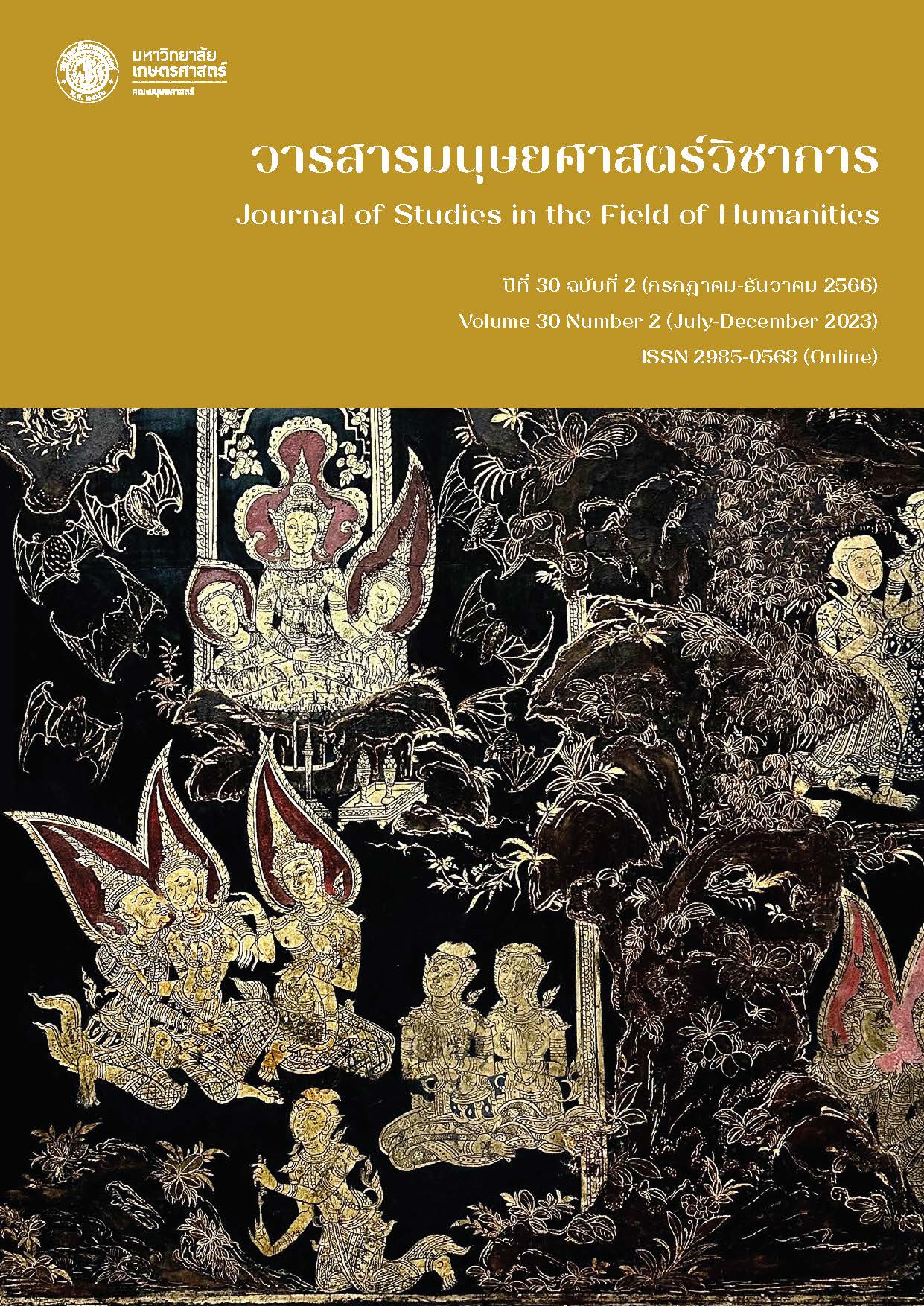Real-Time Advertising Discourse of Twitter Tops Thailand
Main Article Content
Abstract
The purpose of this article was to analyze the structure and the linguistic strategies in the real-time advertising discourse of Twitter Tops Thailand. The researcher collected the real-time advertising data of Twitter Tops Thailand from September 1, 2018 to November 30, 2018, and 117 real-time advertising discourses were collected and analyzed.
The study results revealed that the structure of the real-time advertising discourse of Twitter Tops Thailand consisted of three parts as follows. 1) The opening section: the content from the events gaining attention from people in society was used. Three types of content, namely entertainment, news, and festivals or important dates were used. 2)The story: the details of the product, including the names, properties and description of the product were described. 3) The closing section: where to buy and the website to place an order were informed. In addition, hashtags (#) on the events that people in society were paying attention to were used. The three structures of the discourse were sequenced and correlated. Moreover, five linguistic strategies, namely intertextuality, cohesion, rhyming words, reduplication and wordplay were used in the real-time advertising discourse of Twitter Tops Thailand. The communication contexts influencing the choice of structures and linguistic strategies for achieving the product advertising objectives include real-time marketing strategies, text producers, audience, communication objectives and media types.
Article Details

This work is licensed under a Creative Commons Attribution-NonCommercial-NoDerivatives 4.0 International License.
References
กรรณิการ์ สุพิชญ์. (2549). ภาษาโฆษณาในสื่ออินเทอร์เน็ต (วิทยานิพนธ์มหาบัณฑิต สาขาวิชาภาษาไทย). มหาวิทยาลัยมหาสารคาม, มหาสารคาม.
กระทู้พันทิป. (2561, 18 พฤษภาคม). ยอมใจความเทพของแอดมิน Tops Thailand ที่มีต่อนักแสดง ต่อละคร และต่อกระแสต่างๆ. สืบค้นเมื่อ 1 มีนาคม 2564 จาก https://pantip.com/topic/37679216.
กฤติน ขันละ. (2564). โครงสร้างปริจเฉทโฆษณาออนไลน์ผลิตภัณฑ์เสริมอาหารเพื่อสุขภาพ. ในการประชุมวิชาการเสนอผลงานวิจัยระดับบัณฑิตศึกษาแห่งชาติ ครั้งที่ 22 มหาวิทยาลัยขอนแก่น (น. 281-292). ขอนแก่น: มหาวิทยาลัยขอนแก่น.
จันทิมา อังคพณิชกิจ. (2561). การวิเคราะห์ข้อความ. กรุงเทพฯ. มหาวิทยาลัยธรรมศาสตร์.
ณัฐพร พานโพธิ์ทอง. (2556). วาทกรรมวิเคราะห์เชิงวิพากษ์ตามแนวภาษาศาสตร์: แนวคิดและการนำมาศึกษาวาทกรรมในภาษาไทย. กรุงเทพฯ: โครงการเผยแพร่ผลงานวิชาการ คณะอักษรศาสตร์ จุฬาลงกรณ์มหาวิทยาลัย.
เบญจวรรณ ศริกุล. (2553). วิเคราะห์ภาษาในแผ่นพับโฆษณาเครื่องสำอาง ปี พ.ศ. 2551 (วิทยานิพนธ์มหาบัณฑิต สาขาวิชาภาษาไทย). มหาวิทยาลัยศรีนครินทรวิโรฒ, กรุงเทพฯ.
ปานดวงใจ บุตรกินรี. (2547). การศึกษาเปรียบเทียบการตีความบทโฆษณาจากนิตยสารคุณภาพและนิตยสารปริมาณ. (วิทยานิพนธ์มหาบัณฑิต สาขาวิชาภาษาศาสตร์) มหาวิทยาลัยธรรมศาสตร์, ปทุมธานี.
ฝ่ายเศรษฐกิจและศูนย์ข้อมูลมหาวิทยาลัยหอการค้าไทย. (2561). กลยุทธ์ยุค 2018 สำหรับตลาดออนไลน์ Real-Time Marketing. สืบค้นเมื่อ 5 มีนาคม 2564 จาก https://www.thaichamber.org/content/file/document/1025181540459744.pdf.
พนมพร นิรัญทวี. (2551). กลวิธีการใช้ภาษาในข้อความโฆษณา: ปัจจัยที่มีอิทธิพลต่อการใช้ภาษา. วรรณวิทัศน์, 8, 89-145.
มาร์เก็ตติ้ง อุปส์. (28 กุมภาพันธ์ 2561). Thailand Zocial Awards 2018: Data is Sexy เมื่อความฉลาด (Wisdom) ของดาต้า (Data) กลายเป็นตัวทั้งสร้างแบรนด์และพลิกฟื้นแบงก์ในยุค Digital Disruption. สืบค้นเมื่อ 5 มีนาคม 2564 จาก https://www.marketingoops.com/news/biz-news/thailand-zocial-awards-2018-data-is-sexy/.
ราชบัณฑิตยสถาน. (2556). พจนานุกรมฉบับราชบัณฑิตยสถาน พ.ศ. 2554. กรุงเทพฯ: ราชบัณฑิตยสถาน.
ลินิน แสงพัฒนะ. (2557). สัมพันธบทของตัวละครนางเอกในสื่อละครโทรทัศน์ กรณีศึกษาละครโทรทัศน์เรื่องแรงเงา (การค้นคว้าอิสระมหาบัณฑิต สาขาวิชาการสื่อสารเชิงกลยุทธ์). มหาวิทยาลัยกรุงเทพ, ปทุมธานี.
สำนักงานราชบัณฑิตยสภา. (2550, 21 สิงหาคม 2550). บทวิทยุรายการ “รู้ รัก ภาษาไทย”. สืบค้นเมื่อ 5 มีนาคม 2564 จาก http://legacy.orst.go.th/?knowledges=กระแส-21-สิงหาคม-2550).
Brown, G. & Yule, G. (1984). Discourse Analysis. Cambridge: Cambridge University Press.
Fairclough, N. (1992). Intertextuality in Discourse Analysis. Linguistics and Education (4), 269 -293.
Harris, Z. (1952). Discourse analysis. Language, 28, 1-30.
Stubbs, M. (1983). Discourse Analysis: The sociolinguistic analysis of natural language. Chicago: The University of Chicago Press.


